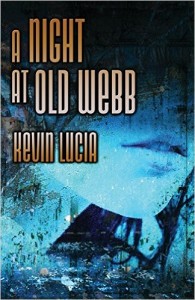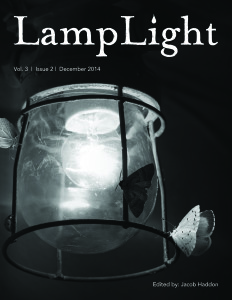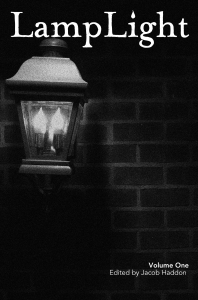With James D. Jenkins from Valancourt Books, a press which specializing in bringing older books back into availability (something we LampLight people think is pretty awesome!). Their press will soon release the last of the horrid novels from Northanger Abby, and we spoke to Jay about that and some of their other endeavors.
* * *
Apok: Jane Austen’s horrid novels were thought to be made up for Northanger Abbey, until Michael Sadleir tracked them all down in the 1920s. Recently Valancourt put out one of them, Eleanor Sleath’s The Orphan of the Rhine, which has only two known surviving copies. Can you tell us a bit about that process.
VC: Absolutely! Actually, Orphan is the sixth of the seven horrid novels that we’ve republished. We started waaaaaaaaay back in 2005 or 2006 with our first, Regina Maria Roche’s Clermont (1798), which is a really terrific Gothic novel. Over the years, we published the others: Francis Lathom’s The Midnight Bell (1798), Peter Teuthold’s The Necromancer (1794), and Eliza Parsons’s Castle of Wolfenbach (1793) and The Mysterious Warning (1796). We still have one left to go: Carl Grosse’s exquisitely titled Horrid Mysteries (1796).
The horrid novels are great reads. As you mentioned, until Michael Sadleir tracked down hard copies of each of them in the 1920s, many scholars thought Austen had made up the titles to parody similar books that were being published during her day. It’s hard to imagine today, but in Sadleir’s day, there wasn’t Google or an international online library catalog like Worldcat, so without mailing letters to each major world library or visiting them in person, it wasn’t easy for a scholar like Sadleir to find copies of the books or know for certain they existed. In the end, he got lucky and found them when he bought huge lots of old books in crates at auction. After the books were proved to exist, many critics insisted that Austen had singled out these seven ‘horrid novels’ to ridicule them. In reality, among the hundreds of Gothic novels published in the 1790s, Austen picked out seven of the best. The mention of these specific seven titles in Northanger Abbey is actually an 18th-century example of astute literary criticism. And Austen’s mentioning of these seven texts has saved some really interesting novelists of that era, such as Francis Lathom and Eliza Parsons, from being totally lost in obscurity.
As far as the process goes, it’s a matter of tracking down the original text, usually either on microfiche, or obtaining a PDF from the British Library, and then manually retyping the book — often four volumes — then carefully proofreading the text multiple times to make sure it’s accurate. We also get university professors and scholars to contribute introductions and notes to help modern-day readers appreciate the texts. For The Orphan of the Rhine, it was a little more difficult — there was no PDF or microfiche version of the book, so we had to drive from where we living at the time, Kansas City, to Charlottesville, Va., where one of the two surviving copies was housed, a two-day drive. Then we had to sit in Special Collections and take photographs of each of the 1600+ pages of the book on our phones, so that we could go home and type out the text.
Apok: But this isn’t the only classic you have brought back into the light. Valancourt’s purpose is bringing these classics back. Do any of the other titles you have republished have a story of rediscovery?
VC: They all have stories! We’ve now published over 250 books, dating all the way back to Charles Johnstone’s Chrysal from the early 1760s up to neglected novels from the 1980s, like Stephen Gregory’s The Cormorant. Some of the titles in our Gothic Classics series are actually so rare that only one copy is known to exist worldwide, like Peter Middleton Darling’s The Forest of Valancourt; or, The Haunt of the Banditti (1813). Some of the more modern ones have stories too. We’ve now published six novels by the excellent Francis King (1923-2011); it all started when, as I was browsing at the library, I came across a copy of his novel An Air That Kills (1948), which sounded interesting. Actually, that ended up being the first 20th-century title we published, and we’ve gone on to publish dozens of other great modern novels.
Apok: How do you discover new books to republish?
VC: All kinds of ways. We’re constantly on the lookout for great obscure books in need of new editions, whether we’re browsing at a used bookstore, library, or on eBay, or researching online. We’ve also been fortunate to get a lot of great recommendations from our readers. Many of our editions have been the result of someone’s recommendation or an email from someone offering to edit and introduce a particular text.
Apok: Horror isn’t the only thing you guys do, though. Tell us a little about the other books you publish.
VC: We publish in three categories, horror/weird/supernatural/occult being one of them; we also publish vintage gay-interest fiction as well as a more general catch-all category for neglected literary classics that don’t really fit into the ‘horror’ or ‘gay’ categories. I talked about it in another interview recently online, so I won’t go into it as much here, but although some people may not understand why we publish horror fiction and gay-interest stuff, the fact is that the two overlap a great deal. Historically, dating back to the 1700s, and even today, it’s often been gay people writing horror fiction: the two often go hand in hand.
If you browse our website and the 250+ books we offer, you’ll find a lot of fascinating stuff. Besides the rare 18th-century Gothic novels I already mentioned, there are the “penny dreadfuls” of the Victorian era, like George W.M. Reynolds’s The Mysteries of London, which was originally so popular that it outsold Dickens, as well as some of the strange fin de siècle fiction of the 1890s, like the novels and supernatural short stories of Richard Marsh. Every one of the books we publish has its own really interesting story, and if you click through the website and take a look at some of the titles, you’ll see that. In the description for each book, we explain not only what it’s about but also why it’s still worth reading all these years later, and most of them also include excerpts from contemporary reviews.
Apok: What is next in store from you?
VC: Tons and tons of great stuff! In our series of 20th-century classics, we have reissues of great horror stuff from Michael McDowell (Cold Moon Over Babylon, with a stunning Mike Mignola cover!), Michael Talbot, Bernard Taylor, and Robert Marasco’s Burnt Offerings (basis for a classic 1970s film). On the more literary side, we have a brand new book (not a reprint!) from Michael Frayn, author of Noises Off, the funniest farce ever written, and three-time nominee for the Booker Prize. And for our 18th and 19th century classics series, we have a great anthology of Graveyard Poetry from the 18th century, our final ‘horrid novel’, Horrid Mysteries, and a bunch of other great stuff. Also, we’ve started reissuing a ton of great classic books as e-books for $2.99 each, and we have some really fun stuff planned for that series for October for Halloween!
Apok: Any shows, or events that Valancourt will be at over the next few months?
VC: We’ll be at Monster Fest in Chesapeake, Va. in October, and then at the World Fantasy Convention in Washington, D.C. in November. If anyone happens to be there, stop by and say hi at our table!
* * *
We are admirers of Valancourt and their great work, and hope you’ll check them out. Get Eleanor Sleath’s The Orphan of the Rhine from Valancourt books, and other classics, such as The Elementals by Michael McDowell, now!



